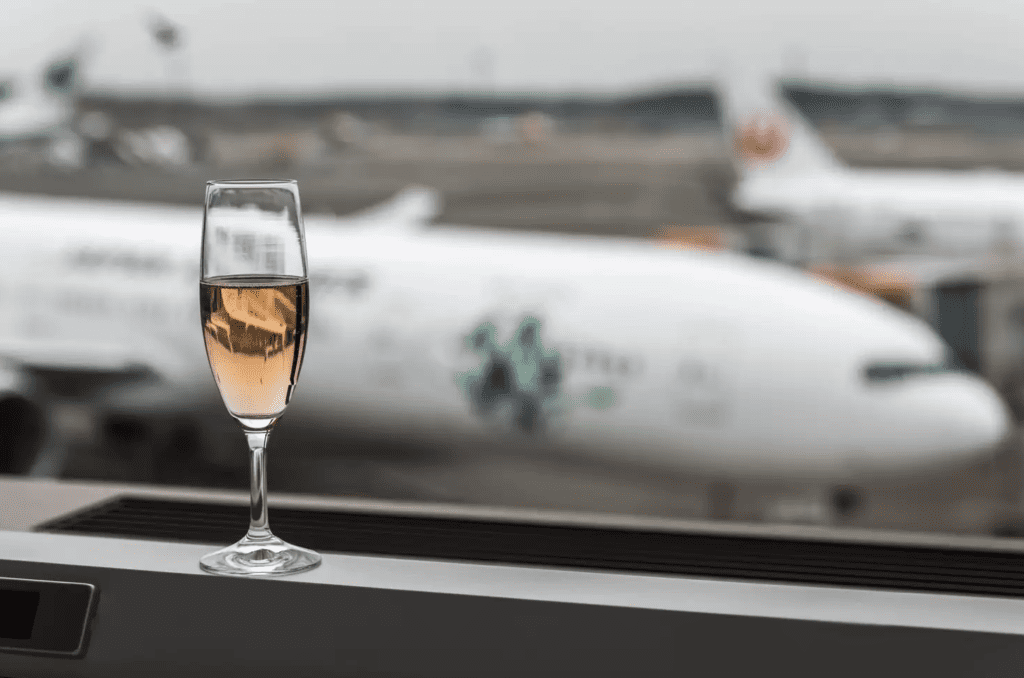
“Take a deep breath” I remind myself as I trudge the airport rental car parking lot with two large roller bags. The Palm Springs airport is not designed for people to conveniently self-park and turn in their rental cars close to the TSA entrance. I make it in plenty of time, enough time to order a wine spritzer at the airport bar in celebration of my massive accomplishment. Every item in our soon to be sold desert home has a color-coded tag, placed there by me–yellow for donate, blue for family member pick up, and red for “pod.” The treasures I brought from our Pennsylvania house will be returned in the same type of transport pod that brought them there nearly 4 years ago. I lift my glass to salute the two girl friends who visited during the past several weeks to help with the sorting and separating and to enjoy with me, the house, and surroundings that the pandemic had banned us east coasters from visiting until now. My other solitary toast was to the family who, in a month or so, will be making this house their home. Knowing that another family will enjoy the house, and the results of the handiwork and heart I’ve poured into it, softens the sorrow of me having to let go of it.
I often question my attachment to house and home. The grief and sorrow I feel now is directly related to how much I’ve invested in having and caring for places I’ve called “home.” I wonder sometimes if I’ve been living out one of my mother’s strongest desires and biggest sorrows–to own her own home. Due to his position in his company, my father was subject to transfer at the whim of his employers. After one brief period when he had owned a home and had to sell it and lose money, he vowed to stay flexible. So, along with Dad, and her six kids, my mother lived as a life-long tenant. What stood out for me as a child about being a renter is that we could never put anything into the house, paint a room, plant a shrub, change the wallpaper, because the house wasn’t ours.
Another influence on my strong connection to home may come from the symbol for my astrological sign of cancer which is the crab. In addition to having an out of sorts name, this creature carries his home on his back. I did my own version of this for many years when I drove a small truck with a cabover camper. Going everywhere in such a self-contained manner was extremely satisfying. Because I was providing my own housing and transportation, I could attend workshops in various parts of the country and take my children on camping adventures we couldn’t have afforded otherwise.
During the isolation of the pandemic, when I couldn’t travel across the continent to this house, to gather with family members for holidays as we had done in the first years that we owned it, I tried to remember the many people who were homeless, without any place to call home. Ralph Caplan, a designer, and poet who consults on workspaces begins his poem “Everybody needs a Here/a nest, a niche/a room of one’s own.” He ends the stanza with the line “A corner that belongs to you as much as you belong to it.” Sometimes it seems like such an over-the-top privilege to have two homes, yet if we imitated the native indigenous Aqua Caliente who moved across this desert land according to the weather – spending summers in the mountains and winters on the lower plateau–we could live as they did more gently on the earth, save on those heating and air-conditioning bills, and contribute less to the forces causing global warming. Maybe there is something to this snowbird concept.
As children, we constructed tents out of bed linens, houses out of cardboard boxes and forts out of snow. We searched for secret shelters in the forest glen, and in our room, or in the space over our beds, we placed posters and images representing what we truly loved. Moving out from the family home to our first apartment, we often didn’t mind that, to come up with the rent, we shared the space with more people than the place was designed to accommodate. In our adult lives we move in and out of condos, apartments and houses, sometimes in response to school or work, our own careers or those of our partners. We move to larger homes as our families grow, stream remodeling shows, and work on our fixer-uppers. Working at home during the pandemic, our ideas of ideal floor plans and open concept living change as our needs change. Later, we downsize after the children are gone and in our elder years, after the death of a spouse or partner, we may need to move into a place that offers assistance. Throughout this journey of place-making we can be sure that our need for “that nest, that nitch, that room of one’s own” will provide lifelong opportunities for experiencing losses and gains, and much practice in becoming artists of the art of grieving.

